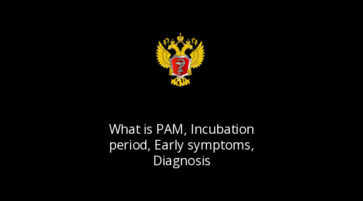
Aybintio (abaloparatide)
Aybintio is a prescription medicine used to treat osteoporosis in postmenopausal women at high risk…

PAM (Primary Amoebic Meningoencephalitis) is a rare but deadly disease caused by the Naegleria fowleri amoeba. Naegleria fowleri, commonly known as the brain-eating amoeba, is a free-living amoeba found in warm freshwater environments. While it prefers warm water habitats, it can survive for short periods in other conditions…. Read More »

Gnathostomiasis is a parasitic infection caused by the roundworm Gnathostoma. It is most commonly found in Asia, but cases have been reported in other parts of the world as well. The natural reservoir for Gnathostoma is various animals, including fish, reptiles, and mammals. Humans become infected by consuming undercooked or raw meat or fish containing the larvae of the parasite…. Read More »

Leprosy, also known as Hansen’s disease, is an ancient chronic infectious disease caused by the bacterium Mycobacterium leprae. It has been recorded throughout history, and was highly stigmatized in medieval Europe and the Middle East…. Read More »

Chagas disease, also known as American trypanosomiasis, is a parasitic infection caused by the protozoan parasite Trypanosoma cruzi. The natural reservoir of the parasite is mainly wild animals such as opossums, armadillos, and rodents, while the main mode of transmission to humans is through the bite of infected triatomine bugs, also known as kissing bugs. Chagas disease is endemic in parts of Central and South America, where poverty and poor living conditions contribute to its spread…. Read More »

West Nile fever is a viral infection caused by the West Nile virus, which is primarily transmitted through the bite of infected mosquitoes. The natural reservoir for the virus includes various bird species. The disease is prevalent in many countries, including the United States, and is associated with outbreaks in certain regions during the summer and fall seasons…. Read More »

Aybintio is a prescription medicine used to treat osteoporosis in postmenopausal women at high risk…

Paxlovid is a combination drug containing two antiviral agents, nirmatrelvir and ritonavir. It is used…

Xcopri is an anticonvulsant medication used to treat partial-onset seizures in adults. In the clinical…

Maintaining optimal health requires more than just a balanced diet; it demands a precise understanding…

The link between ALS and environmental exposures has been an area of active investigation, with researchers…

Quercetin is a flavonoid and phytochemical found in many fruits, vegetables, and herbs. It is a potent…

Quercetin-rich foods and supplementation offer potential health benefits for various population groups.…

Hericium erinaceus, also known as the Yamabushitake mushroom, is a type of edible and medicinal mushroom…
Diet Type: low-fat
Daily Calories: 1500 cal
Carbs: 80 grams g carbs
Proteins: 240 grams g protein
Fats: 20 grams g fat
Diet Type: low-fat
Daily Calories: 1200 cal
Carbs: 60 grams g carbs
Proteins: 200 grams g protein
Fats: 20 grams g fat
Diet Type: low-carb
Daily Calories: 1200 cal
Carbs: 60 grams g carbs
Proteins: 120 grams g protein
Fats: 20 grams g fat
Diet Type: keto
Daily Calories: 1500 cal
Carbs: 100 grams g carbs
Proteins: 200 grams g protein
Fats: 20 grams g fat
Diet Type: paleo
Daily Calories: 1800 cal
Carbs: 100 grams g carbs
Proteins: 100 grams g protein
Fats: 35 grams g fat
Diet Type: dairy-free
Daily Calories: 1500 cal
Carbs: 80 grams g carbs
Proteins: 200 grams g protein
Fats: 20 grams g fat
Diet Type: gluten-free
Daily Calories: 1500 cal
Carbs: 66 grams g carbs
Proteins: 100 grams g protein
Fats: 20 grams g fat
Diet Type: pescatarian
Daily Calories: 1200 cal
Carbs: 60 grams g carbs
Proteins: 90 grams g protein
Fats: 25 grams g fat
Diet Type: vegetarian
Daily Calories: 1500 cal
Carbs: 50 grams g carbs
Proteins: 80 grams g protein
Fats: 30 grams g fat
Diet Type: vegan
Daily Calories: 220 cal
Carbs: 40 grams g carbs
Proteins: 20 grams g protein
Fats: 10 grams g fat
Increase your conversion rate!

